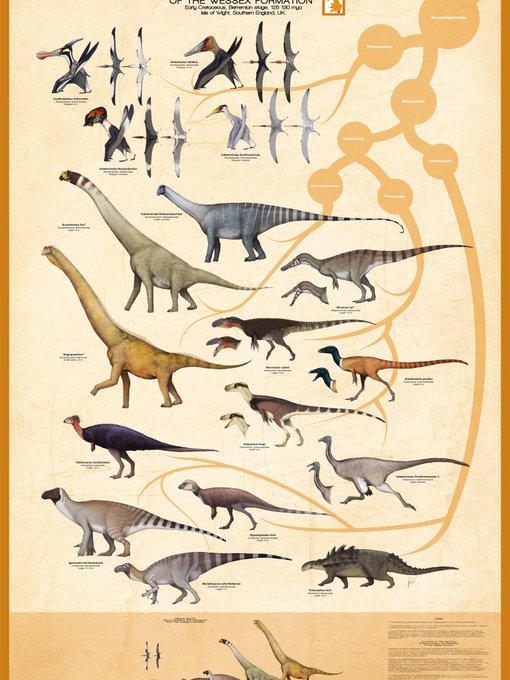centrosaurineのTwitterイラスト検索結果。 11 件
Rounding off the first week of #Dinovember2022 is the Cretaceous buffalo Einiosaurus. With its’ can-opener nasal horn, this beaut —for me at least— the best centrosaurine out there
Althought rhinos and elephants took big terrain in Ostalia, Centrosaurines standed strong. Such an example is the Quillofallo (Acrodontoceratops Pogonae). With herds of at least 100 members, they travel along the plains and rainforests to eat fruits and seagrasses @aoostalia
Wow, very colorful! I personally don't think centrosaurine ceratopsian dinosaurs got this brightly colored. Who knows though like modern birds, they may have been brightly colored to attract mates. First image is a fantastic illustration by the very talented artist Raph Herrera
Si, me tarde, pero aquí está la segunda tanda.
#dinosaurs #dinocember #dinocember2021 #dicynodont #nonpterodactyloid #invertebrate #centrosaurine
Day 8 - Centrosaurine (Albertaceratops)
#dinocember #dinocember2021 #dinosaurs #art
@ArminReindl Another new ornithischian out today: early-diverging centrosaurine Menefeeceratops sealeyi Dalman et al., 2021 from the Campanian Menefee Formation of New Mexico. #dinosaurs
Very good illustration by Sergey Krasovskiy of the newly named Menefeeceratops sealeyi (Named after the location where the fossils were found 'Menefee horned face'.) This new centrosaurine was originally described in 1997, however, was not named until very recently by
Welcome to Menefeeceratops sealeyi!!! Our paper describing the new centrosaurine ceratopsid dinosaur from the Late Cretaceous of New Mexico is now online!
Paper: https://t.co/BW4MhLBGdV
#EarthMonth Day 24: #dinosaur of the day is Albertaceratops, meaning 'Alberta horned face'. Albertaceratops was centrosaurine horned dinosaur found in Oldman Formation of Alberta, Canada. Image credit: Nobu Tamura #scicomm #STEM #EarthDay #AcademicTwitter #Science #sciencetwitter
For the final day of #SciArtTweetStorm these posters is how my way of presenting evolutionary trees started. It is something I really enjoy doing. In here you can see Centrosaurine Ceratopsids, Ornithomimosaurs and Alvarezsaurs, Dromaeosaurs and Wessex Fm #SciArt #paleoart



























